We all want to look our best, but at what cost? Many beauty products contain ingredients that could potentially harm our health and the environment. As consumers become more aware of what they’re putting on their skin, it’s crucial to learn how to spot potentially toxic ingredients in cosmetics and personal care items.
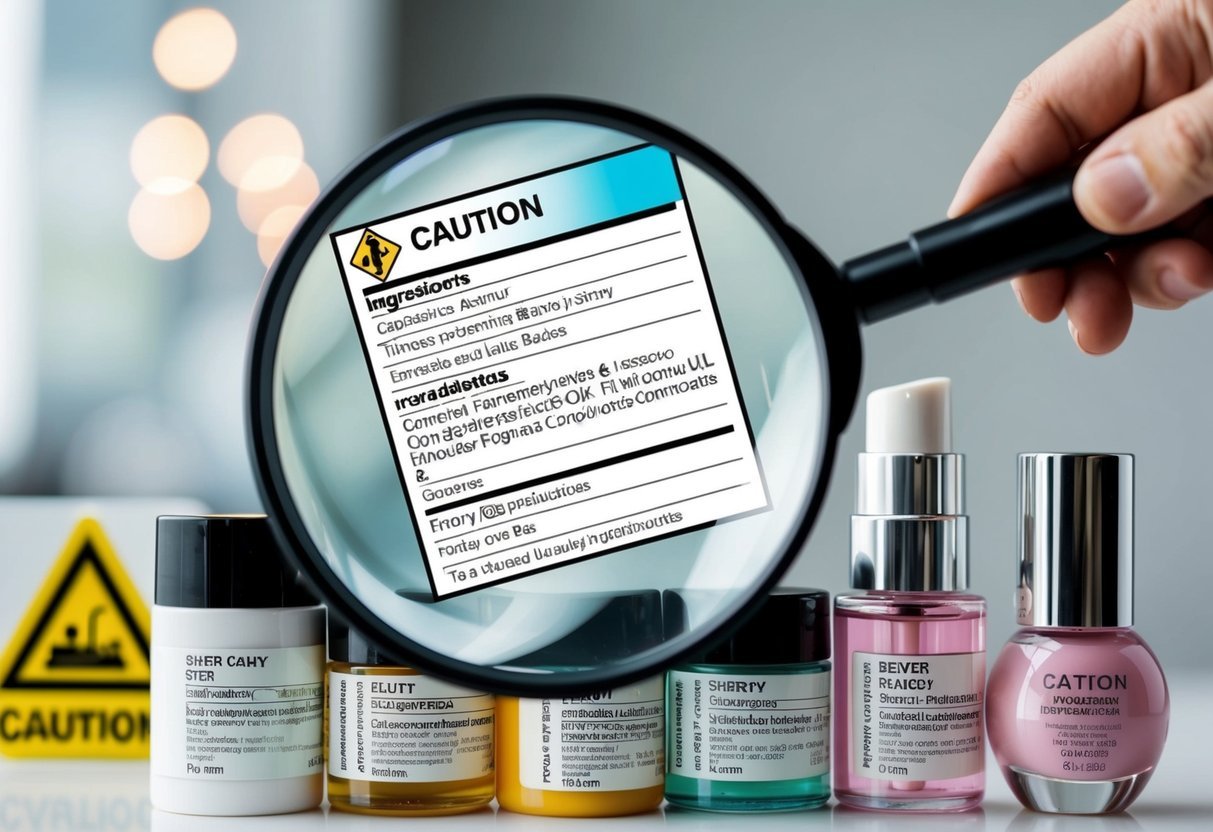
Reading labels and understanding ingredient lists can help us make safer choices for our beauty routines. By arming ourselves with knowledge about common harmful substances, we can navigate the world of cosmetics more confidently. Let’s explore some practical tips for identifying and avoiding toxic ingredients in our favorite beauty products.
1) Parabens (e.g., Methylparaben)
Parabens are common preservatives found in many beauty products. They help prevent the growth of bacteria and mold, extending shelf life. You’ll often spot them on ingredient lists with names like methylparaben, propylparaben, or butylparaben.
Some people prefer to avoid parabens in their organic beauty routines due to ongoing debate about their potential effects on health and the environment.
Some studies have raised questions about parabens’ impact on hormone function. Though regulatory bodies consider them safe in small amounts, we believe in taking a cautious approach.
When shopping for clean beauty products, we look for paraben-free options. Many brands now offer alternatives using natural preservatives like rosemary extract or grapefruit seed extract.
It’s worth noting that not all parabens are created equal. Some may be more concerning than others. If you’re unsure, research specific types or consult with a dermatologist.
Remember, going paraben-free doesn’t mean compromising on quality or safety. Plenty of fantastic, effective products skip these synthetic preservatives entirely.
2) Phthalates (e.g., Diethyl Phthalate)
Phthalates are sneaky little chemicals that often hide in our beauty products. We’ve gotta keep an eye out for these guys, especially diethyl phthalate (DEP).
You might spot them listed as “fragrance” or “perfume” on labels. Tricky, right? They’re used to make scents last longer and plastics more flexible.
We want to steer clear of phthalates because they can mess with our hormones. Not cool! Look for acronyms like DBP, DEHP, and DEP on ingredient lists.
The good news? Lots of clean beauty brands are ditching phthalates. We can opt for products that use natural fragrances from essential oils instead.
When shopping, let’s keep our eyes peeled for “phthalate-free” labels. It’s a great way to ensure we’re using safer, more natural products on our skin.
Remember, our skin absorbs what we put on it. By choosing phthalate-free options, we’re taking a big step towards a cleaner beauty routine.
3) Sodium Lauryl Sulfate (SLS)
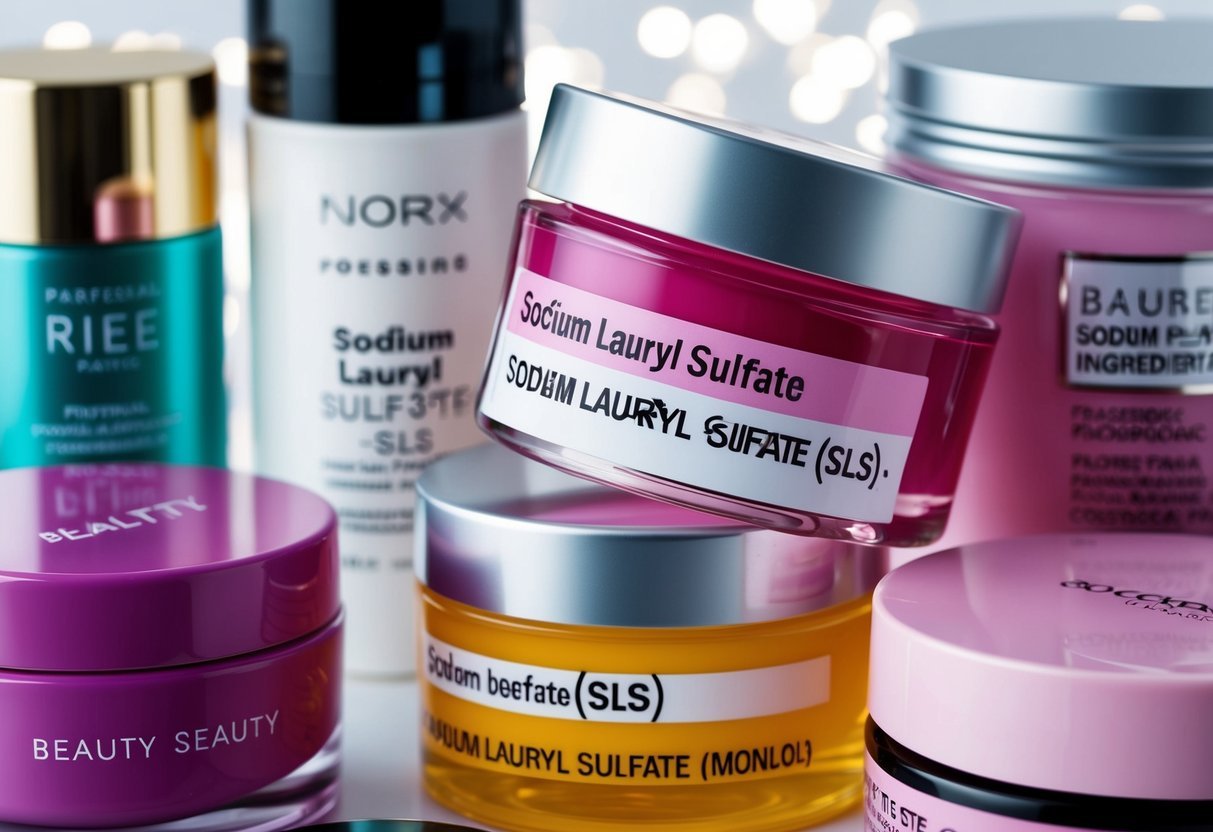
Sodium lauryl sulfate (SLS) is a common ingredient in many beauty products, especially those that foam up. We often find it in shampoos, body washes, and facial cleansers.
SLS is a surfactant that helps remove oil and dirt from our skin and hair. While it’s effective at cleaning, some people find it can be harsh or irritating, especially for those with sensitive skin.
When scanning ingredient lists, we might see SLS listed under different names. It could appear as sodium dodecyl sulfate or lauryl sodium sulfate. Keeping an eye out for these variations is key.
For those of us seeking gentler options, there are SLS-free alternatives available. Many natural and organic beauty brands offer products without this ingredient, using milder plant-based cleansers instead.
If we’re concerned about SLS, we can look for labels that specifically state “SLS-free” or “sulfate-free.” These products often use ingredients like coconut-derived cleansers or saponified oils for a gentler cleansing experience.
4) Formaldehyde Releasers (e.g., DMDM Hydantoin)
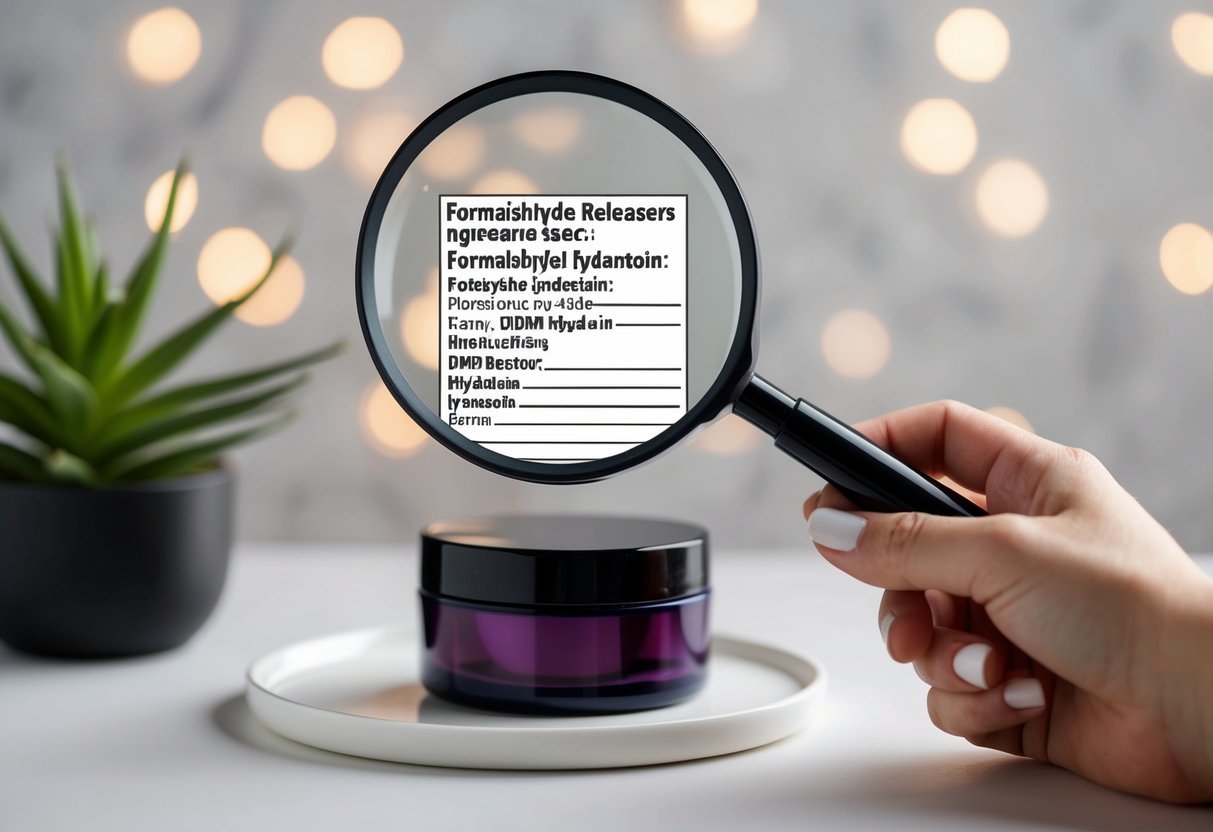
We’ve got to keep our eyes peeled for formaldehyde releasers in our beauty products. These sneaky ingredients slowly release formaldehyde, a known allergen and potential irritant.
DMDM hydantoin is a common one to watch out for. It’s often used as a preservative in personal care items to extend shelf life and prevent microbial growth.
While regulations allow up to 0.6% of formaldehyde releasers in products, we prefer to steer clear altogether. Many of us who react to formaldehyde may also have issues with these releasing compounds.
When scanning ingredient lists, look for other formaldehyde donors too. Some examples include quaternium-15, imidazolidinyl urea, and diazolidinyl urea.
Opting for natural preservatives is a great way to avoid these potentially problematic ingredients. We love seeing products that use plant-based alternatives to keep things fresh.
Remember, our skin absorbs what we put on it. Choosing cleaner, more natural options helps us feel confident about what we’re using on our bodies every day.
5) Synthetic Fragrances
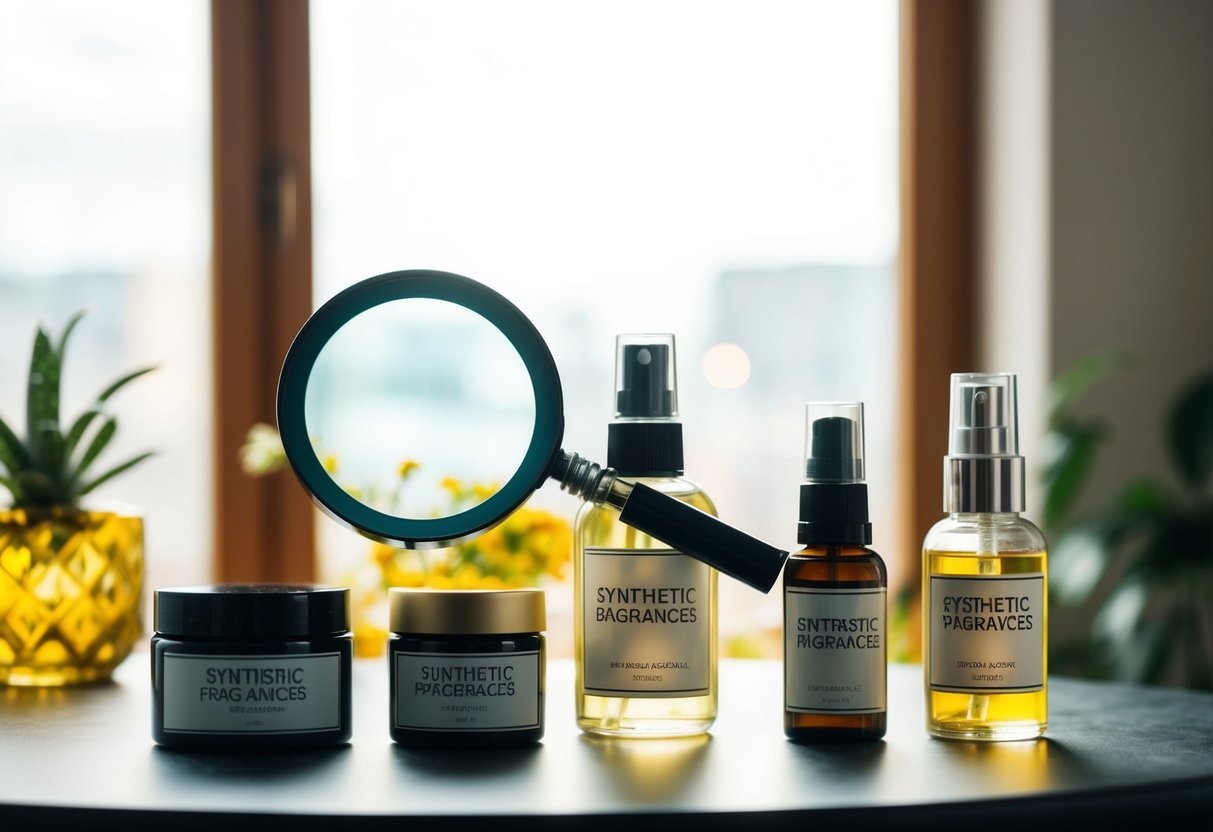
We’ve all experienced that enticing scent when opening a new beauty product. But those artificial fragrances may be hiding some nasty secrets.
Many companies use the term “fragrance” as a catch-all for a cocktail of undisclosed chemicals. This fragrance loophole allows them to keep ingredients under wraps.
Unfortunately, synthetic scents can trigger allergic reactions, headaches, and breathing issues for some people. They may also contain hormone-disrupting compounds.
When shopping, we look for products that list “fragrance-free” or “no synthetic fragrances” on the label. Natural scents from essential oils are generally a safer bet.
We also pay attention to vague terms like “parfum” or “aroma” on ingredient lists. These often indicate synthetic fragrances are present.
Opting for unscented versions of lotions, shampoos, and other personal care items helps us avoid potentially problematic fragrances. When we do want a scented product, we choose those with 100% natural essential oil blends.
6) Triclosan
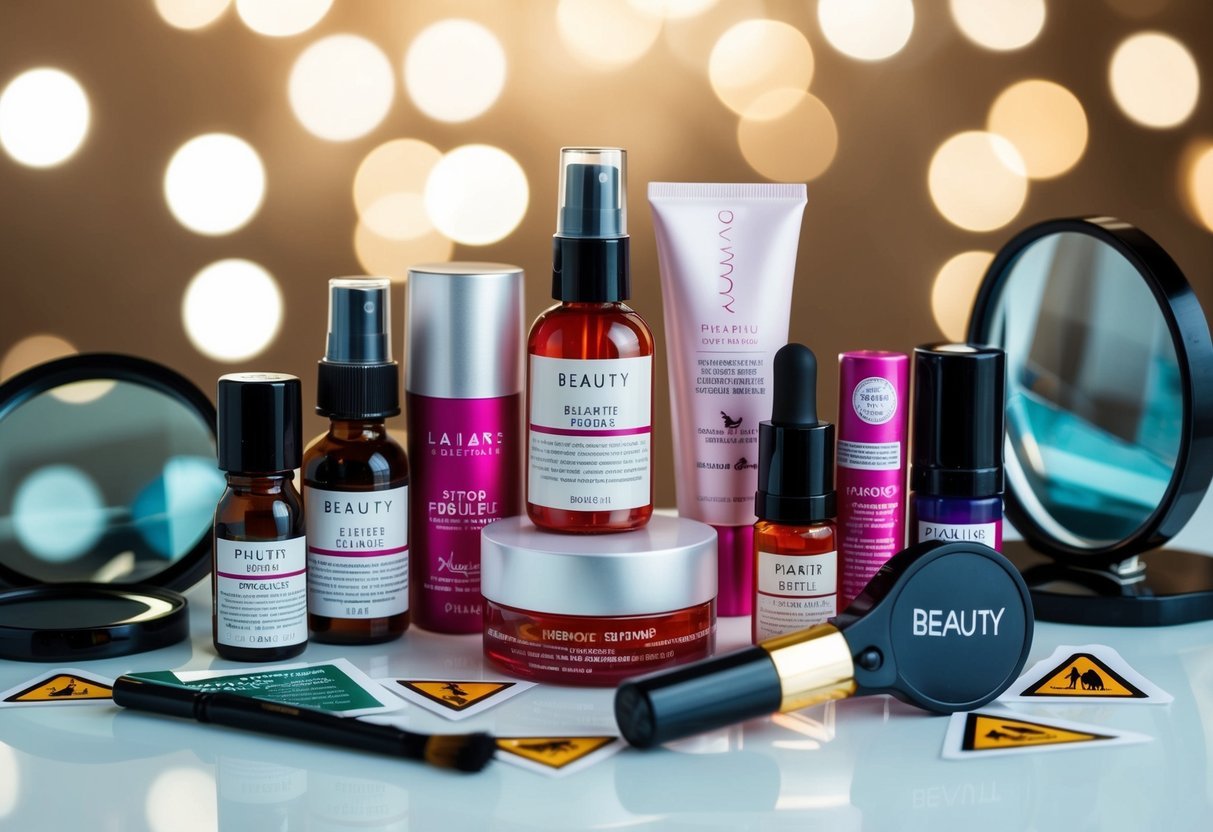
Triclosan is an ingredient we’ve been keeping our eyes on. It’s an antimicrobial agent that’s been hanging around in skincare products since the 1970s.
You might spot triclosan in soaps, deodorants, toothpastes, and even some cosmetics. Its job? To fight bacteria and fungi. Sounds good, right?
Not so fast. We’ve learned that triclosan might not be as friendly as we once thought. Some studies suggest it could mess with our hormones and potentially contribute to antibiotic resistance.
The FDA has raised concerns too. They’ve banned triclosan from certain products, like hand soaps and body washes. But it’s still lurking in other items.
When we’re shopping for pure, organic beauty products, we make sure to check labels carefully. If we see triclosan listed, we usually put that product back on the shelf.
We prefer to stick with natural antimicrobial alternatives. Tea tree oil or grapefruit seed extract can do the job without the potential risks.
Understanding Common Toxic Ingredients
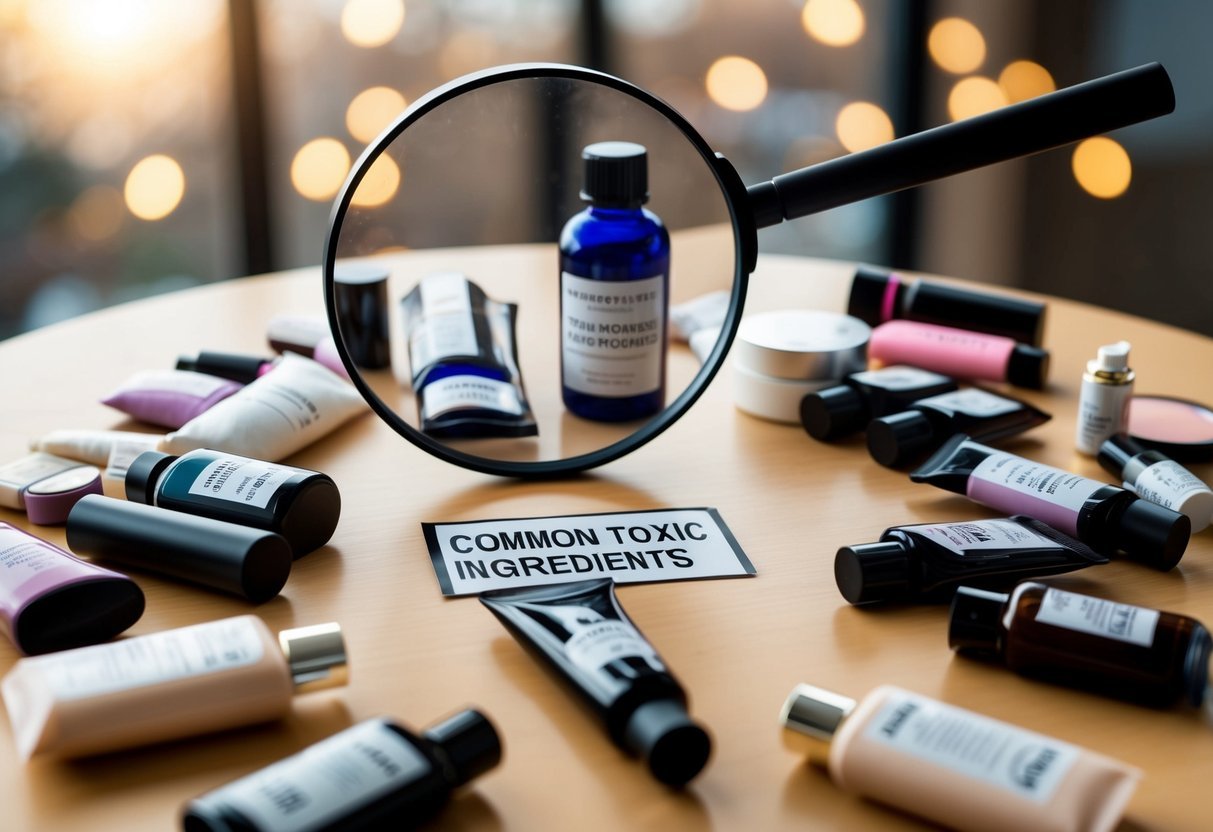
Many beauty products contain potentially harmful chemicals that can irritate skin or disrupt hormones. Let’s examine two of the most prevalent toxic ingredients to watch out for.
Parabens: What You Need to Know
Parabens are preservatives used in many cosmetics to prevent bacteria growth. We often see them listed on labels as methylparaben, propylparaben, or butylparaben. Studies have linked parabens to hormone disruption and breast cancer, though more research is needed.
These chemicals can mimic estrogen in the body. This may interfere with normal hormone function and potentially increase cancer risk. Parabens can also cause skin irritation in some people.
We recommend opting for paraben-free products when possible. Look for natural preservatives like grapefruit seed extract or vitamin E instead.
Why Fragrance Can Be Harmful
“Fragrance” on a label can hide a cocktail of undisclosed chemicals. Companies aren’t required to list fragrance ingredients, which may number in the hundreds.
Many fragrances contain phthalates – chemicals linked to hormone disruption and reproductive issues. Synthetic scents can also trigger allergies, headaches, and asthma in sensitive individuals.
We suggest choosing fragrance-free products or those scented with pure essential oils. Be wary of “unscented” items too, as they may contain masking fragrances.
Natural botanical extracts can provide a lovely scent without the risks of synthetic fragrances. Lavender, rose, and citrus essential oils are great options.
Reading Beauty Product Labels
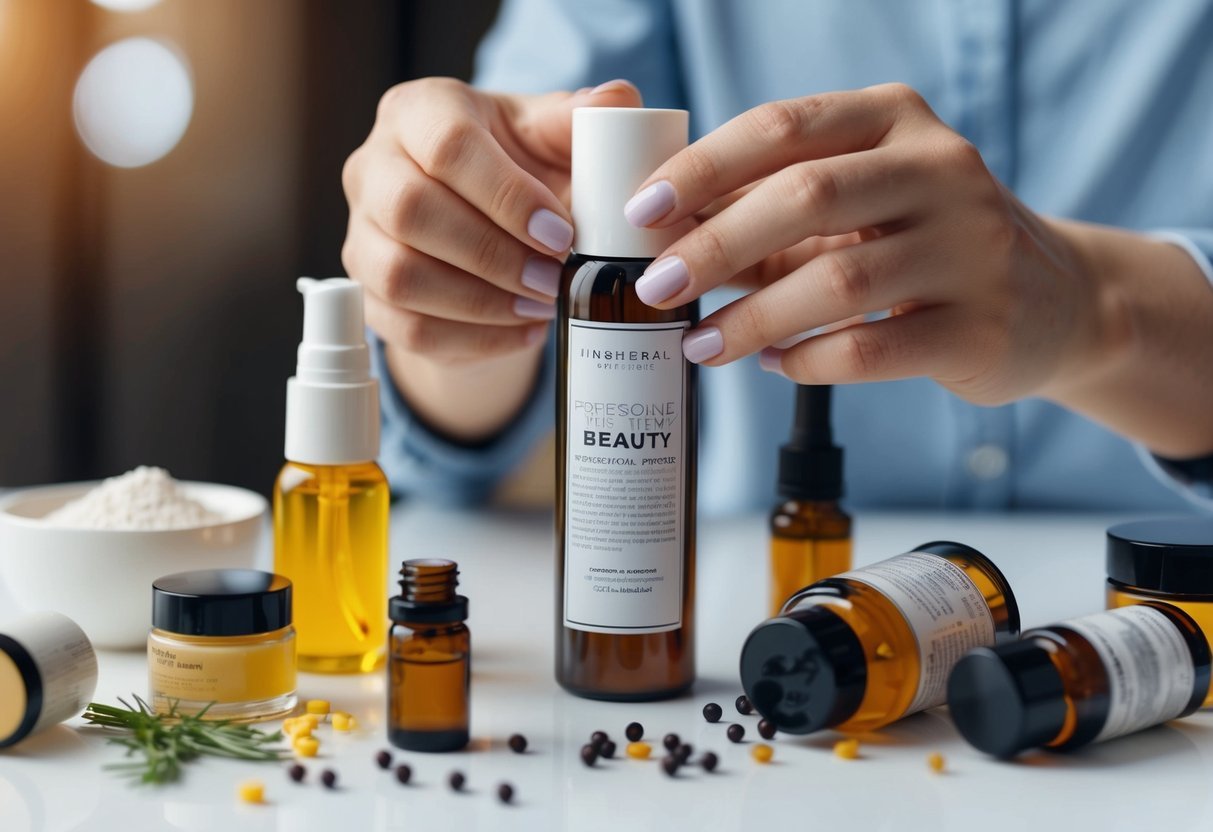
Navigating beauty product labels can feel like decoding a secret language. We’ll explore how to decipher lengthy ingredient lists and spot key certifications that signal safer, more natural options.
Decoding Long Ingredient Lists
Beauty product labels often feature a dizzying array of scientific names. We’ve found that ingredients are typically listed in order of concentration. The first few items make up the bulk of the product.
Look out for familiar plant-based ingredients like aloe vera, jojoba oil, or shea butter near the top. These are good signs of a more natural formula.
Beware of synthetic fragrances, parabens, and sulfates. They’re often hidden under vague terms or complex chemical names. A quick online search can help clarify unfamiliar ingredients.
We recommend focusing on the first 5-10 ingredients. They give the best snapshot of what’s really in the product.
Recognizing Certifications and Seals
Trustworthy certifications can help us identify cleaner beauty products. Look for seals from organizations like USDA Organic, EWG Verified, or COSMOS. These indicate stricter standards for ingredient sourcing and manufacturing.
The Leaping Bunny logo assures us that a product is cruelty-free. For vegan options, keep an eye out for the Vegan Action or PETA-certified vegan symbols.
Be cautious of vague claims like “natural” or “pure” without backing certifications. They’re often marketing fluff. Instead, we trust clear, specific claims supported by reputable third-party verifications.
Frequently Asked Questions
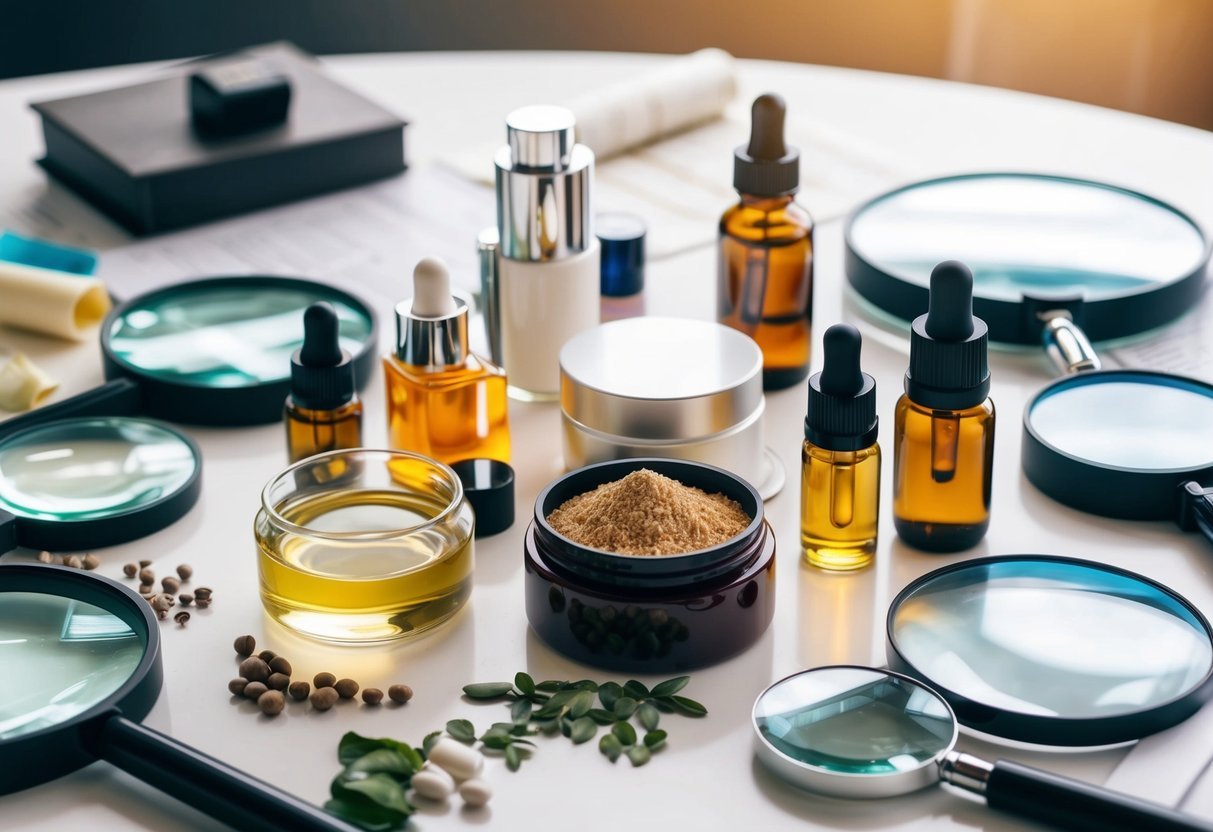
Navigating the world of beauty products can be tricky. Let’s tackle some common concerns about potentially harmful ingredients and how to choose safer options. One way to make informed choices is by reading ingredient labels carefully and researching unfamiliar substances. Avoiding harmful chemicals in beauty products means opting for brands that prioritize transparency and use cleaner formulations. Look for certifications like “organic” or “dermatologist-tested” to ensure safer options for your skin.
What should you steer clear of in skincare products?
We recommend avoiding parabens, phthalates, and sodium lauryl sulfate (SLS). These chemicals can irritate skin and may have long-term health effects. Look for products that use natural preservatives and gentle cleansing agents instead.
Which makeup brands are known for using harmful substances?
It’s best to research brands individually. Some mainstream companies still use questionable ingredients, while many clean beauty brands prioritize safer formulations. We suggest checking the Environmental Working Group’s Skin Deep database for brand ratings.
How can you check if your beauty products contain dangerous chemicals?
Read the ingredient list carefully. Watch out for words like “fragrance,” which can hide numerous chemicals. Look up unfamiliar ingredients online or use apps that scan product barcodes to reveal potential hazards.
What’s the deal with the most harmful chemical lurking in makeup?
Formaldehyde and formaldehyde-releasing preservatives are big concerns. These ingredients can cause skin irritation and are potential carcinogens. We advise checking labels for DMDM hydantoin, quaternium-15, and other formaldehyde releasers.
How can you spot toxic ingredients in your makeup?
Pay attention to words ending in “-paraben” and “phthalate.” Be wary of artificial fragrances and dyes. Look for products that clearly list all ingredients and prioritize natural, recognizable components.
What’s the scoop on making sure your cosmetics are safe and toxin-free?
We recommend opting for brands that are transparent about their ingredients. Choose products with shorter ingredient lists and familiar, plant-based components. Certifications like USDA Organic or EWG Verified can offer extra peace of mind.

